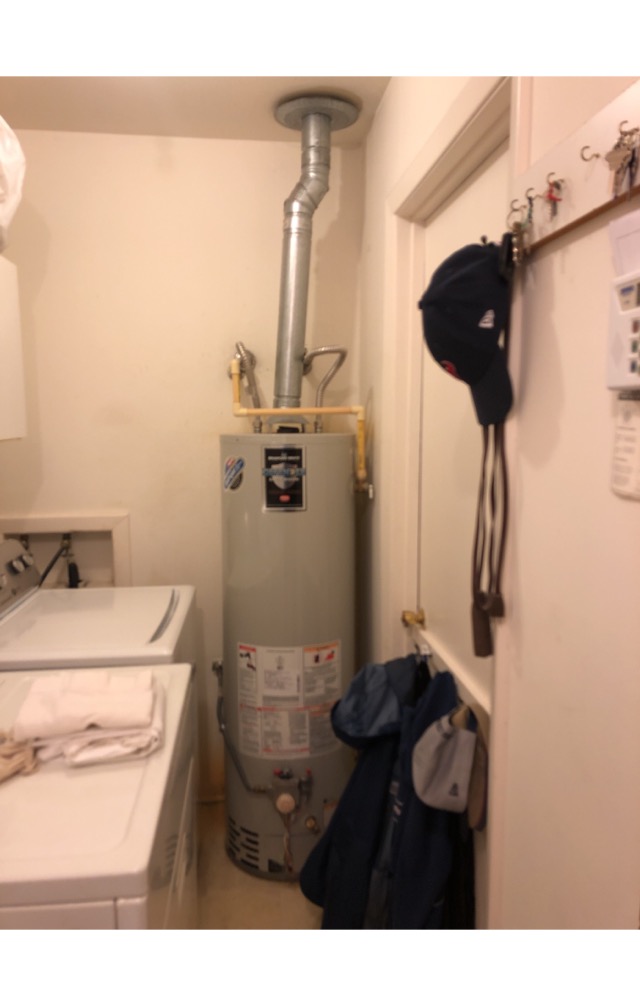Where is your water heater located? Is it in the laundry room like the one shown here? Or in a closet? These locations are typical for older homes, but they do bring up some concerns.

When a water heater quits, a homeowner will generally ask a plumber to provide a new one in exactly the same location. That makes sense in many ways, since the plumbing lines, venting, and building structure are already set up there. Here are a few things to keep in mind when replacing an old water heater:
- Physical space. Every water heater manufacturer requires a certain amount of space for the unit to fit into. This information is often listed on the manufacturer’s label affixed to the water heater. A water heater that is placed in a space that’s too small may not heat water efficiently, or may be at risk of overheating the surrounding wall or ceiling materials.
- Combustion air. Gas water heaters need air to burn natural gas efficiently. Many older homes have a water heater located in a laundry room or closet. Newer water heaters may require a different amount of combustion air and may not burn efficiently in the same space. This can result in exhaust gases collecting inside the home instead of being vented to the exterior.
- Venting. Similar to combustion air, newer gas water heaters have different venting requirements than old units. Old venting systems that are not compatible with new water heaters can also be a cause of exhaust gases inside the home.
- Connections. Although there may be plumbing, gas, and/or electrical connections in place at the water heater location, they may not be compatible with the new unit. These connections should be evaluated to determine if they are adequate and safe.
- TPR valve. The temperature and pressure relief (TPR) valve is a safety feature on water heaters. It is designed to release water if the temperature or pressure exceed certain levels. Older water heaters may not have a TPR valve, or it may be inoperable, or the drain line may be improperly routed.
- Drip pan. Does the old unit have a drip pan underneath to collect leaks? If not, consider adding one. While not required in all instances, a drip pan is very inexpensive way to add a little more protection.
These are just a few things to think about when your water heater needs replacement. If you have any questions, consider consulting a licensed home inspector or a licensed plumbing contractor about your situation. Please Contact Us to see how Milepost Home Inspection can help.
Most of all, always do what’s necessary to keep yourself and your family safe!
